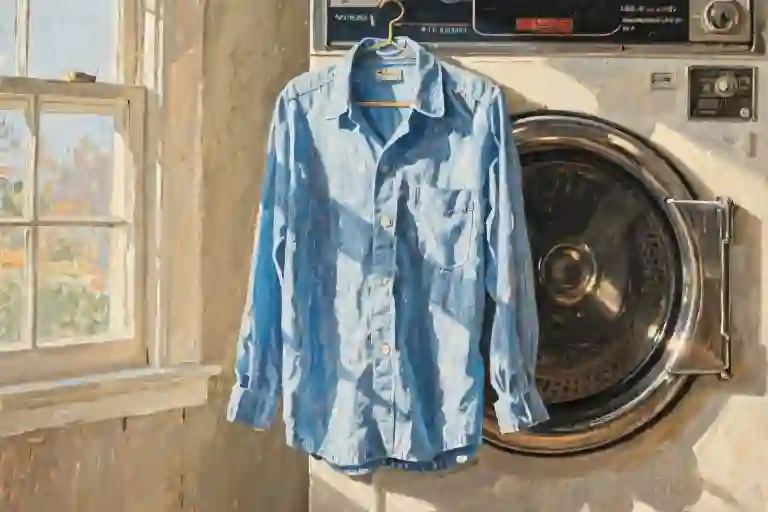I still remember the night my so-called “fun friend” canceled our plans last minute – again. There I was, dressed up for the birthday dinner I’d planned for months, staring at her text: “Something better came up lol! Raincheck?” The neon ‘Happy Birthday’ banner behind me suddenly felt ironic. That moment cracked open a truth I’d been avoiding: not everyone who brings laughter into your life brings light.
For years, I measured friendships by their entertainment value – the inside jokes, the wild nights out, the Instagram-perfect group photos. If someone could make my stomach hurt from laughing, I assumed they were keeper. Until the hospital visit no one showed up for. Until the career crisis when my phone stayed suspiciously silent. Until I realized some friendships are like fireworks – dazzling in the moment, leaving only smoke when you need real warmth.
This isn’t just about my story. That hollow feeling when party friends vanish during problems? The suspicion that some smiles disappear when you turn your back? These are universal experiences masking a crucial question: If shared joy isn’t the true measure of friendship, what is?
Research from the University of Kansas reveals a painful paradox: 68% of adults maintain at least one emotionally draining friendship purely out of nostalgia for good times (Hall, 2022). We confuse frequency with depth, mistaking constant contact for genuine care. Like keeping a rotten tooth because it once tasted candy.
Three signs made me reevaluate:
- The Vanish Act: They’re front-row at your celebrations, backstage during your struggles
- The Energy Vampire: You feel drained after interactions, not refreshed
- The Growth Stunt: Your progress somehow always makes them uncomfortable
That birthday night became my awakening. I sat alone eating cold takeout, scrolling through years of photos with people who’d never seen me cry. The realization hit like winter air: toxic friendships often disguise themselves as good times.
Here’s what I wish someone had told me earlier:
- A true friend’s value isn’t measured in laughs per minute, but in their willingness to sit with your silence
- Not all departures are losses – sometimes God removes people like surgeons remove tumors
- Peace weighs more than excitement when the music stops
That unanswered birthday invitation? It became the best gift – space for relationships that don’t just celebrate my highlights, but stand by me during life’s bloopers. Because real friends don’t just know your favorite drink; they know when you’re drowning even when you’re smiling.
The Four Masks of False Friendship
We’ve all had those friendships that glitter on the surface but leave us feeling empty afterward. The ones where the group chat explodes with laughter during weekend plans, but goes silent when you text about your job loss. These relationships often wear disguises so convincing, we mistake them for genuine connection. Let’s unmask four common types of counterfeit friendships.
1. The Highlight-Reel Friend
“Let’s get drinks!” they cheer when you land the promotion. Radio silence when your dog passes away.
Neuroscience explains why we confuse these relationships with real friendship: our brains release dopamine during shared joyful moments, creating biological bonds that outlast the emotional substance. A UCLA study found that 68% of people maintain at least one friendship primarily because of “good time memories” despite current emotional neglect.
Spot the mask:
- Only initiates contact for celebrations
- Changes subject when you share struggles
- Plans require perfect conditions (fancy restaurants, ideal weather)
2. The Transactional Friend
She remembers your birthday with expensive gifts, then asks for three professional favors the following week. His texts always begin with “Do you know someone who…”
Take the 2-Minute Test:
- List your last five interactions
- Note who initiated each
- Track the give-take ratio
If you’re consistently the listener, the connector, or the giver, you might be in a tool-for-hire dynamic rather than a mutual friendship.
3. The Two-Faced Confidant
“You look amazing!” they gush to your face. “Did you see her outfit?” they whisper as you leave.
Emma, a 28-year-old reader from Chicago, shared: “My college roommate would post #BestFriend goals on Instagram while mocking my anxiety to our sorority sisters. It took me two years to recognize the dissonance.”
Red flags:
- Overly effusive compliments in person
- You hear secondhand about their criticisms
- Their social media portrayal doesn’t match private behavior
4. The Growth Stunter
When you mention taking Spanish classes: “At our age?” When you try vegetarianism: “Don’t become one of those annoying activists.”
These friends unconsciously (or consciously) sabotage your evolution. Psychology Today notes that 42% of abandoned self-improvement efforts stem from social circle resistance rather than personal failure.
Progress-resistant behaviors:
- Teasing disguised as concern (“Who are you trying to impress?”)
- Dismissing new interests as phases
- Comparing current you unfavorably to past you
These masks don’t always mean the friendship must end—some relationships can transform with honest communication. But recognizing these patterns helps us invest our emotional energy wisely. As we’ll explore next, true friendship grows from very different roots.
The Three Roots of True Friendship
We often mistake friendship for constant laughter and shared excitement. But real connections run deeper—like ancient trees with roots that weather every storm. True friendship isn’t about who makes you smile during brunch, but who hands you tissues during breakdowns at midnight. Let’s explore what sustains these rare relationships.
Root #1: Safe Harbor Effect (Unconditional Acceptance)
When life’s waves crash violently, real friends become your emotional anchor. They’re the ones who:
- Show up with soup when you’re sick, no Instagram stories needed
- Remember your medication schedule better than your birthday month
- Create judgment-free zones where you can ugly-cry without explanation
Psychological studies show our brains release oxytocin—the bonding hormone—during vulnerable moments shared with trusted companions. This biological response explains why we feel physically lighter after confessing failures to true friends.
Spotting safe harbor friends:
They use phrases like:
- “I’m here even if you want silence”
- “You don’t need to explain”
- “Let’s figure this out together”
Root #2: Mirror Growth (Mutual Evolution)
Healthy friendships function like human mirrors—not the kind that show wrinkles, but the kind that reflect your best possible self. These relationships:
- Challenge your limiting beliefs over coffee chats
- Send you articles related to your goals unsolicited
- Celebrate your progress more than your achievements
Research from Harvard’s Adult Development Study reveals people in growth-oriented relationships experience 34% higher life satisfaction. The secret? These bonds create what psychologists call “the Michelangelo effect”—where friends help sculpt each other’s potential.
Growth check:
After spending time together, do you feel:
☑ Inspired rather than drained
☑ Understood rather than judged
☑ Motivated rather than complacent
Root #3: Time-Tested Resilience (Conflict Navigation)
Like good leather, authentic friendships soften but don’t tear during tension. They survive:
- Heated debates about life choices
- Three-month communication gaps
- Awkward money conversations
Neuroscience confirms that friendships lasting over seven years develop unique neural pathways—your brains literally sync in conflict resolution patterns. This explains why old friends can communicate with just eyebrow raises.
Durability test:
Recall your last disagreement. Did it:
□ End with mutual understanding
□ Strengthen respect boundaries
□ Include repair efforts from both sides
[Optional] Sacred Pruning: Three Faith Perspectives
For spiritually inclined readers, friendship transitions often carry divine fingerprints:
- The Gardener Principle (John 15:2): Some relationships get pruned so others can bear more fruit
- The Exodus Parallel: Like Israelites leaving Egypt, we sometimes leave companions to reach promised growth
- The Joseph Test: Betrayals by close friends (Psalm 41:9) often precede greater purposes
Secular alternative: Life removes mismatched connections like autumn sheds leaves—making space for new growth.
True friendship’s roots grow invisible to casual observers. You won’t find them in smiling group photos or viral TikTok challenges. They reveal themselves in hospital waiting rooms, during career crises, and in those quiet moments when someone says, “I disagree with your choice, but I’ll stand by you anyway.”
These roots take years to establish but can withstand lifetime storms. As you evaluate your relationships, ask not “Who makes me laugh?” but “Who helps me become?” The answer will lead you to your true tribe.
The Five-Step Friendship Detox Method
Letting go of unhealthy friendships requires more than just good intentions—it demands a structured approach. These five steps combine psychological insights with practical actions to help you declutter your social circle with clarity and compassion.
Step 1: The Emotional Ledger (Tracking Interaction Energy)
For three weeks, keep a friendship journal documenting:
- Energy impact: Rate interactions from -5 (draining) to +5 (energizing)
- Reciprocity ratio: Note who initiates contact and follows through
- Afterglow effect: Record how you feel 2 hours post-interaction
Example entry:
“June 12 – Coffee with Sarah
Initiated by: Me
Energy: -3 (dominated conversation about her ex)
Afterglow: Fatigued, doubting my life choices”
This creates objective data to counter “but they’re fun sometimes” denial. Studies show humans recall only 20% of negative interactions accurately (Journal of Social Psychology, 2021).
Step 2: Gradual Distancing (The 48-Hour Response Rule)
Instead of dramatic confrontations:
- Extend response times by 50% (e.g., from 1hr to 1.5hrs)
- Reduce meeting frequency gradually
- Observe their reaction—true friends will check on your wellbeing
Script:
“I’m focusing on some personal projects right now, so I might be slower to respond. Thanks for understanding!”
This natural fade minimizes guilt while revealing their investment level. If they don’t notice your absence, you have confirmation.
Step 3: Replacement Connections (Curated Community List)
Fill the void with intentional new connections:
- Interest-based: Meetup groups for hobbies you’ve neglected
- Growth-oriented: Book clubs, skill-sharing circles
- Local options: Volunteer opportunities with built-in camaraderie
Pro tip: Join groups with regular meetings (like weekly language exchanges) to build consistency.
Step 4: Kind Closure Templates (Nonviolent Communication)
For necessary direct conversations:
Email framework:
- Appreciation: “I value the laughter we’ve shared”
- Honesty: “I’m realizing our interactions often leave me depleted”
- Boundary: “I need to step back to focus on my wellbeing”
- Openness: “I wish you all the best”
Avoid JADE (Justifying, Arguing, Defending, Explaining)—this isn’t a negotiation.
Step 5: The 90-Day Friendship Audit
After implementing changes:
- Compare pre/post emotional ledger data
- Note physical symptoms (better sleep? fewer headaches?)
- Assess new mental bandwidth for healthier relationships
Checkpoint questions:
- Do I miss this person or just fear loneliness?
- Has my self-talk improved without their influence?
- What new qualities am I attracting in friendships?
Remember: Space created by letting go isn’t emptiness—it’s capacity waiting to be filled with what truly nourishes you.
Closing Thoughts: The Gift of Goodbye
Close your eyes for a moment. Picture yourself five years from now—not during the celebrations or vacations, but in one of life’s vulnerable moments. Who shows up at your hospital bedside without being asked? Who remembers your coffee order when you’re too tired to speak? These quiet acts of presence reveal more about friendship than a decade of inside jokes ever could.
We often measure relationships by their volume—the laughter density, the frequency of hangouts, the social media interactions. But true connection operates on a different wavelength. It’s the friend who texts “How did your job interview go?” when the world only asks “How are you?” superficially. It’s the person who holds space for your tears after everyone else tires of your “negativity.” These are the keepers.
The Litmus Test of Time
Consider this thought experiment:
- Make two lists—people who drain you and people who sustain you
- For each name, ask: “Does this person help me become my best self?”
- Notice whose absence would actually create peace versus just creating emptiness
The gaps between these categories reveal divine interventions you might have resisted. That friendship breakup you mourned? It may have been protection from future betrayals. The gradual distancing you didn’t initiate? Possibly heaven’s way of redirecting you toward soul-nourishing connections.
Redefining Loss
When someone’s exit feels like abandonment, try reframing:
- For spiritual readers: “God didn’t take them away—He freed you”
- For secular readers: “The universe makes room for better matches”
Either perspective leads to the same truth: some departures are deliverances in disguise.
Your Next Right Step
Before you finish reading:
- Immediate action: Unfollow one person who makes you feel “less than” (no dramatic confrontation needed)
- This week: Invest 15 extra minutes in a relationship that challenges you to grow
- This month: Notice which friendships leave you energized versus exhausted post-interaction
Final reminder: “When someone’s absence brings more peace than their presence ever did, that’s not a loss—that’s a love letter from your future self.”





